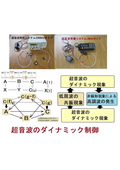A technology for alleviating surface residual stress through the control of megahertz ultrasonic oscillation.
Surface treatment technology using a megahertz ultrasonic oscillation control probe -- Improvement treatment of metal fatigue strength (relaxation and uniformization of surface residual stress) --
The Ultrasonic System Research Institute has developed methods for measuring, analyzing, and evaluating surface residual stress by applying the following technologies: 1) Manufacturing technology for ultrasonic probes 2) Evaluation technology for ultrasonic propagation conditions 3) Surface inspection technology using ultrasound Based on numerous achievements, we believe that various applications are possible as ultrasonic utilization technology, and we are making related technologies publicly available. Specific examples: Surface treatment know-how: Standard settings Output: 13-15V Rectangular wave: Duty 47.1% Sweep range: 500kHz - 13MHz, 2 seconds Settings for low-intensity targets (or long processing times): Output: 1-3V Rectangular wave: Duty 47.1% Sweep range: 300kHz - 3MHz, 1 second (or 100kHz - 5MHz, 1 second) Note: The oscillation conditions can vary significantly due to the ultrasonic propagation characteristics of the target object and the oscillation characteristics of the function generator. Ultrasonic propagation characteristics: 1) Detection of vibration modes (changes in self-correlation) 2) Detection of nonlinear phenomena (changes in bispectrum) 3) Detection of response characteristics (analysis of impulse response) 4) Detection of interactions (analysis of power contribution rates)
Inquire About This Product
basic information
The Ultrasonic System Research Institute has developed a completely new dynamic control technology for ultrasound using two function generators. This technology enables the control of ultrasonic nonlinear phenomena and resonance phenomena through different types of (sweep) oscillation using two different waveforms. By applying this technology, we are developing practical methods to alleviate surface residual stress in components and various application technologies, and we provide consulting services. Standard settings: 1) Sweep oscillation control from 3 MHz to 20 MHz 2) Sweep oscillation control from 60 kHz to 13 MHz 3) Dynamic control of ultrasound using a 42 kHz 35W ultrasonic cleaner (realizing dynamic fluctuation-type ultrasonic propagation control) Note: Regarding the surface of the ultrasonic cleaner's tank, surface residual stress relaxation and uniform treatment are performed using an ultrasonic oscillation control probe and a degassing fine bubble generation liquid circulation device. As a result of uniformization, ultrasonic control using harmonics above 200 MHz has been achieved. Note: "R" statistical processing language autcor: autocorrelation analysis function bispec: bispectrum analysis function
Price information
Feel free to contact us.
Delivery Time
※Feel free to contact us.
Applications/Examples of results
Example 1 1) Sweep oscillation control from 1.0 MHz to 15 MHz 1 2) Sweep oscillation control from 0.6 MHz to 5 MHz 2 3) Precision cleaning at the nano level using a 42 kHz 35W ultrasonic cleaner Example 2 1) Sweep oscillation control from 3 MHz to 20 MHz 1 2) Sweep oscillation control from 60 kHz to 3 MHz 2 3) Nano dispersion processing of metal powders using a 42 kHz 35W ultrasonic cleaner Example 3 1) Sweep oscillation control from 800 kHz to 22 MHz 1 2) Sweep oscillation control from 100 kHz to 11 MHz 2 3) Emulsification and dispersion processing of food and pharmaceuticals using a 42 kHz 35W ultrasonic cleaner Example 4 1) Sweep oscillation control from 3 MHz to 20 MHz 1 2) Sweep oscillation control from 60 kHz to 3 MHz 2 3) Surface treatment of metal parts (relaxation and uniformity technology for surface residual stress) Example 5 1) Sweep oscillation control from 1 MHz to 12 MHz 1 2) Sweep oscillation control from 80 kHz to 7 MHz 2 3) Surface treatment of resin parts December 2024: Development of nonlinear oscillation control technology for ultrasonic probes December 2024: Development of surface inspection technology based on ultrasonic propagation conditions
Detailed information
-

Ultrasonic surface modification technology
-

Ultrasonic surface modification technology
-

Ultrasonic surface modification technology
-

Ultrasonic surface modification technology
-

Ultrasonic surface modification technology
-

Ultrasonic surface modification technology
-

Ultrasonic surface modification technology
-

Ultrasonic surface modification technology
-

Surface modification treatment technology
catalog(36)
Download All Catalogs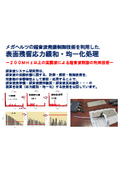

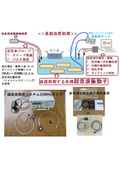






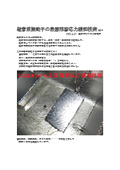




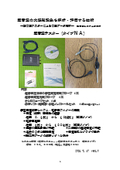

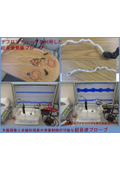



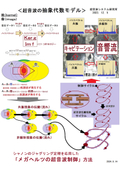
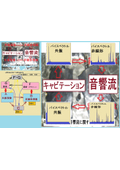
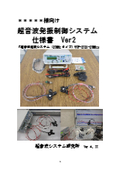
News about this product(46)
Company information
The Ultrasonic System Research Institute conducts the following activities with its original product: ultrasonic systems (sound pressure measurement analysis, oscillation control): 1) Manufacturing and sales of ultrasonic systems (sound pressure measurement analysis, oscillation control) 2) Consulting services for various equipment (Note): cleaning machines, stirring devices, processing equipment, machine tools, plating devices, welding devices, etc. Ultrasonic System (Sound Pressure Measurement Analysis, Oscillation Control) We manufacture and sell a system that combines the "Ultrasonic Tester NA (recommended type)" for easy measurement and analysis of ultrasonic waves and the "Ultrasonic Oscillation System (1 MHz, 20 MHz)" for easy oscillation control. <Patent Applications Filed> Patent Application No. 2021-125866: Ultrasonic Control (Ultrasonic Oscillation Control Probe) Patent Application No. 2021-159990: Ultrasonic Welding Patent Application No. 2021-161532: Ultrasonic Plating Patent Application No. 2021-171909: Ultrasonic Processing Patent Application No. 2021-175568: Flow-type Ultrasonic Cleaning Some of the manufacturing technology for the ultrasonic oscillation control probe is described in Patent Application No. 2021-125866. Patent Application No. 2023-195514: Ultrasonic Plating Using Megahertz Ultrasonic Waves and Fine Bubbles.













